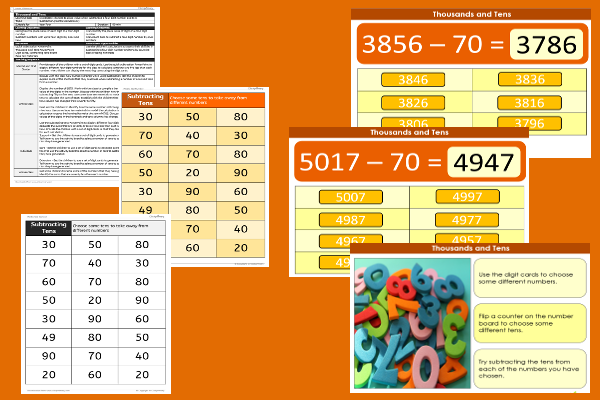Lesson Two – Thousands and Tens

This maths teaching pack for Key Stage Two gets the children to investigate and record changes that can happen to the place value of the digits in a number when subtracting different pairs of four digit number and tens.
The class can identify and model how to use counting back when subtracting different multiples of ten from thousands when calculating each of the subtraction sums.
Download this teaching pack including a lesson plan, classroom activities and an interactive presentation to investigate and record changes that can happen to the place value of the digits in a number when subtracting different pairs of four digit number and tens
Activities in this teaching pack include a worksheet to select and record different multiples of ten that can be used when performing number calculations to subtract pairs of four digit numbers and tens by utilising the technique of counting back to find each sum.
The interactive presentation gets the children to explore changes to the place value of the digits in a number when subtracting a four digit number and tens.
This lesson is part of a maths scheme of work to get the children to practise mental and written calculation strategies to subtract pairs of numbers with up to four digits including exchange between place value. There are teaching activities for shared learning, differentiated worksheets to support independent learning and interactive presentations to introduce concepts and key skills.
-

Theme Park Visit
Practise identifying and calculating the timing and duration of rides and events when visiting a theme park on a special family trip
-

Family Holiday Trips
Identify and record how to compose and publish recounts using adverbials of time and place to describe family holidays to different places in the world
-

Money Multiplication
Explain and model how to use standard written calculation methods to multiply money amounts in pounds and pence when solving number problems
-

Sport Teams
Explain and model how to use brackets and dashes to add extra information to sentences describing how to play sports and games as part of a team
